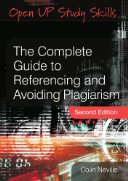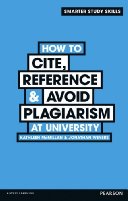Referencing
Section outline
-
As a student, it is important that you identify in your assignments when you are using the words or ideas of another author. The most accepted way of acknowledging the work of another author is to use a referencing system. At Gower College Swansea you are required to use the Harvard referencing system.
eBooks
The following books are available online. Click on the title to access the full-text online using your College login details.

